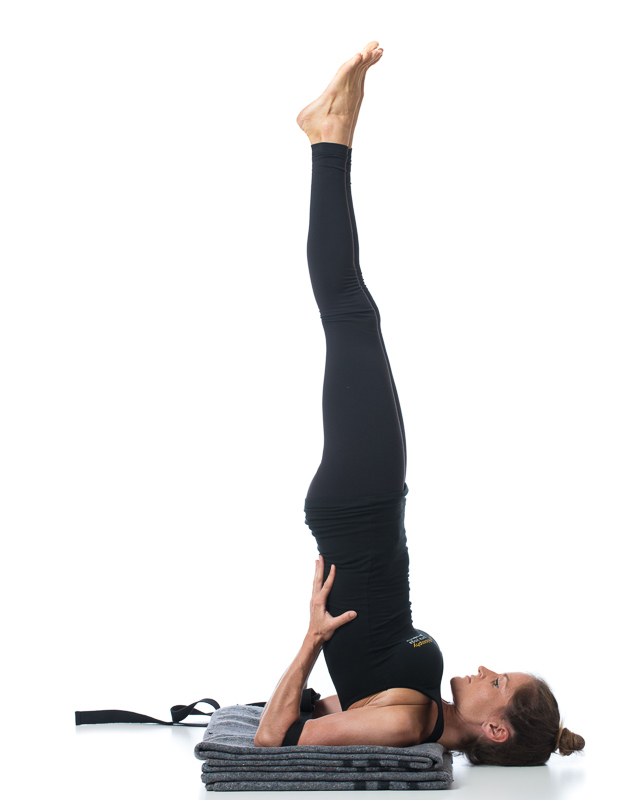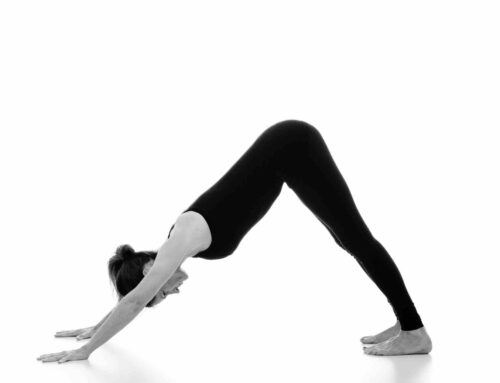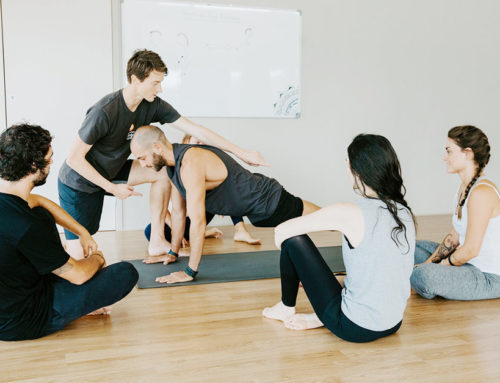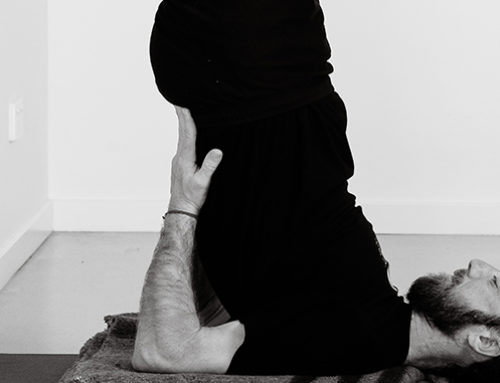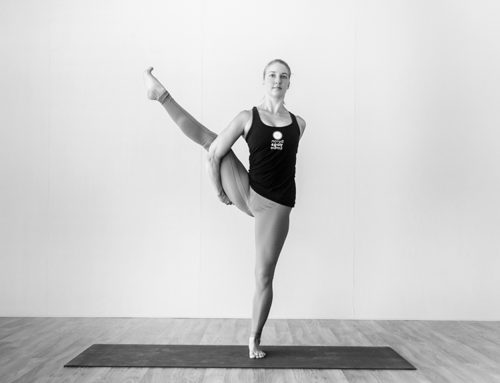Shoulder stand can be a tricky business. It’s all too easy to strain your neck or put undue pressure on your shoulders. The full pose, Salamba Sarvangasana, is considered to be an intermediate posture so for safety you should start with, and beginners should stick with, the supported option. If you are moving into the full pose, it’s crucial to prop correctly to avoid neck injury.
Technique: Primary Instructions
- Take two or three blankets neatly folded to stack-size, and place one on top of each other about one hand distance from wall. The folded edge is out away from wall, blankets stacked by about 1 cm each towards wall
- Run fingers along edge of blanket to ensure it is well-folded
- Sit on left side of mat with right hip to wall
- Place a strap around the arms, slightly above the elbows
- Pivot around and lie down along mat with legs raised up the wall; buttocks resting on floor, ideally touching wall
- Check distance of shoulders from edge of blanket is 4-5 cm
- Keep knees together, feet together. Heels stay in position on the wall as you pivot on heels and take toes to wall, bending knees and working hips towards the centre of the room
- Quickly place palms onto back with fingers pointing towards buttocks. Work elbows in towards being shoulder-width apart
- Neck and face relaxed, breath calm. Don’t turn the head
Option 1
- Straighten legs and keep heels touching the wall
Option 2
- Straighten one leg at a time, keeping the thighs and hips the same distance from the wall
To release:
- Place feet to wall
- Remove strap
- Remove hands, roll down and hug knees to chest
Common Misalignments
- Blankets incorrect distance from wall, facing wrong direction or badly folded
- Head incorrectly aligned with blankets, eg head on blanket
- Tension and/or pressure in face, throat or breath
- Spine rounded and/or chest collapsed
- Elbows splaying out
- In Option 2, feet further from the wall than the hips
Safety
- Release if any strain is felt in the neck and/or face. The breath should be relaxed and smooth while in the posture
- Do not turn the head when in the posture, always keep eyes looking upward
- Use 2-3 blankets to support the neck
- The neck should never experience more than a gentle stretch
Contraindications and Cautions
- Untreated high blood pressure
- Menstruation
- Neck injury
- Acute kyphosis: practice an alternative such as Setu Bandha Sarvangasana
- Pregnancy: avoid unless student is quite experienced
- Salamba Sarvangasana is considered to be an intermediate to advanced pose. Do not perform this pose without sufficient prior experience or unless you have the supervision of an experienced instructor
- For safety, this pose should be first demonstrated to beginners
Benefits
- Stimulates the thyroid and parathyroid glands in the neck, which help to regulate the hormones in the body
- Reverses effects of gravity and rests the heart
- Increases vitality
- A deep neck release
- Cooling and calming pose
- Opens the chest, increases thoracic girdle strength and improves breathing

